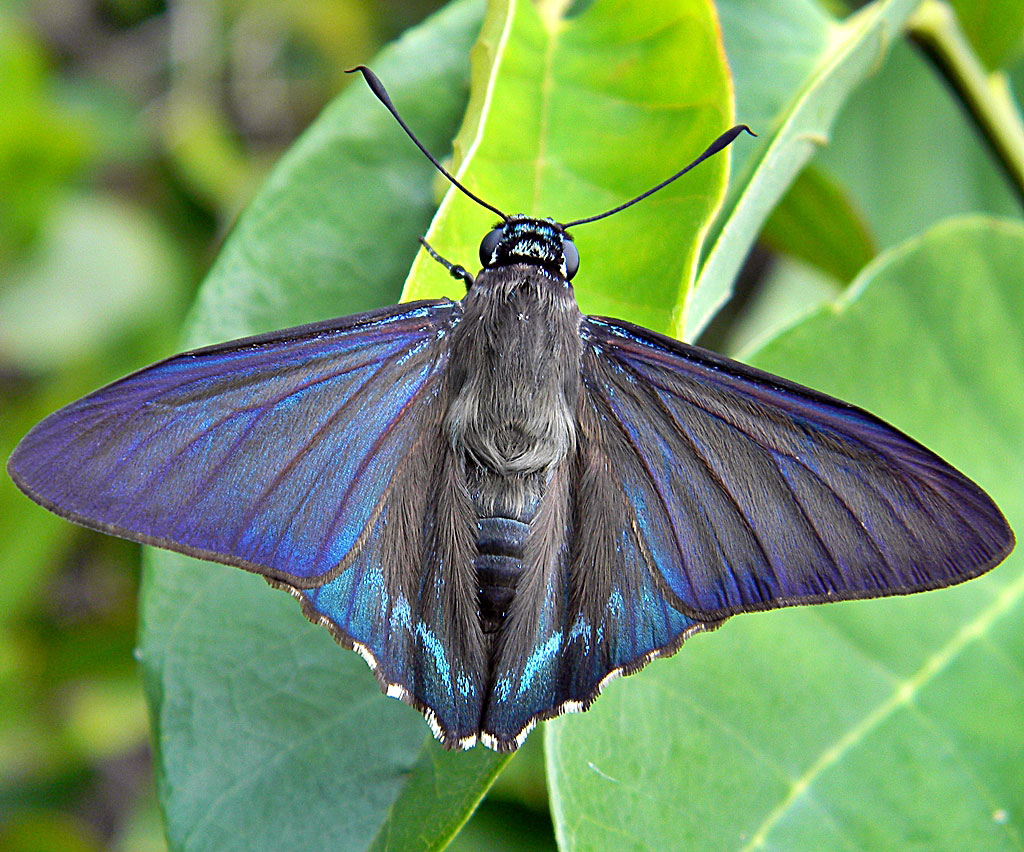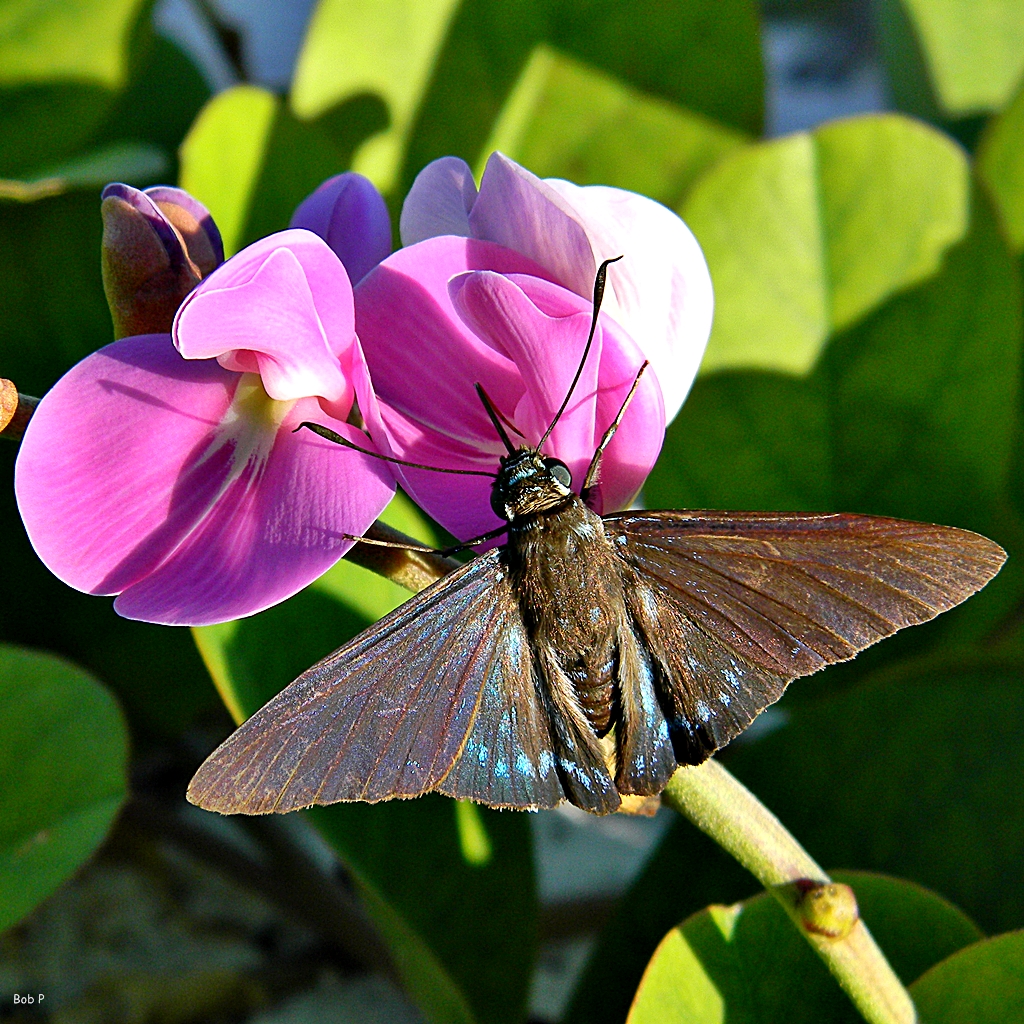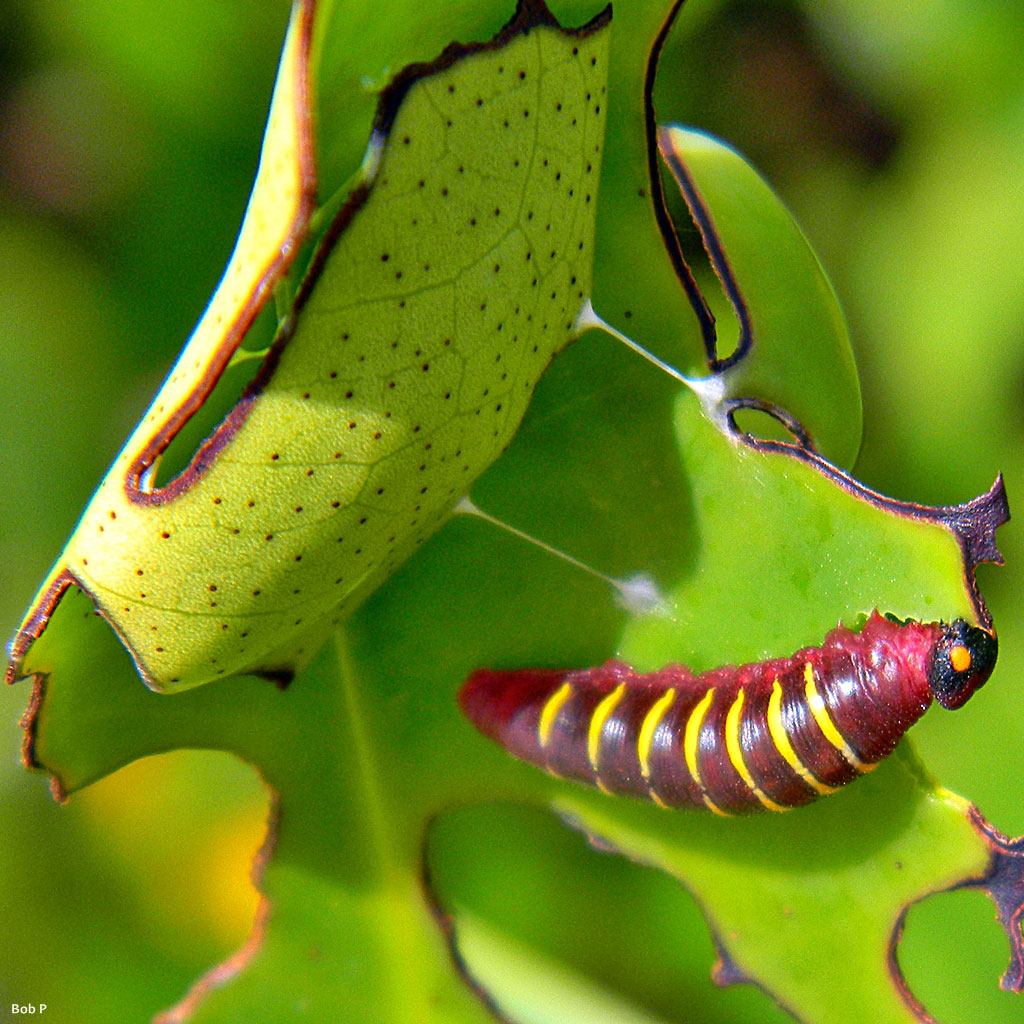Mangrove skipper
“Know your native pollinators” is a series of articles that will help you identify and appreciate Florida’s varied pollinators, including bees, wasps, butterflies, moths, beetles, flies, birds and bats. Pictured above: Mangrove skipper (Phocides pigmalion) on Baybean (Canavalia rosea) by Bob Peterson (CC BY 2.0) .
Next time you take a trip to the coast, peek into the mangrove forest and see if you can find a Mangrove skipper in there!
CLASSIFICATION
Class: Insecta
Order: Lepidoptera
Family: Hesperiidae
Subfamily: Pyrginae
Genus species: Phocides pigmalion
IDENTIFICATION
Mangrove skippers are mostly brown, but can be identified by the streaks of electric blue on their hindwings. In fact, their wings shine with an overall blue iridescence. They have a medium-sized wingspan, at two to almost three inches. The females are larger than males. The Mangrove skipper’s face is white with electric blue dots and stripes on the head, thorax and abdomen. These are fast flying butterflies.

FORAGING PREFERENCES
A favorite nectar flower for this skipper is unsurprisingly the mangrove, also the butterfly’s host plant. Red mangroves(Rhizophora mangle) are a particular favorite. Other flowers that attract the Mangrove skippers for nectar are Poisonwood (Metopium toxiferum) and False tamarind (Lysiloma latisiliquum) trees; Florida Keys blackbead (Pithecellobium keyense), Sevenyear apple (Casasia clusiifolia) and Bahama strongbark (Bourreria succulenta) shrubs; Ocean blue morning-glory (Ipomoea indica) and Redgal (Morinda royoc) vines; and wildflowers Sweetscent (Pluchea odorata), Pineland lantana (Lantana depressa var. depressa), Jack-in-the-bush (Chromolaena odorata) and Beggarticks (Bidens alba).
LIFE CYCLE
The female butterfly lays a single egg on the Red mangrove leaf. When the caterpillar hatches, it uses its silk to build a shelter on the underside of the leaf. The caterpillars have a reddish-brown head with yellow eye patches. Young caterpillars are red with yellow stripes. When they get older, the caterpillars turn a waxy white color.
HABITAT
Although some can occasionally stray all the way north to coastal South Carolina, our Mangrove skippers mostly inhabit southern Florida north to Pinellas and Volusia counties and can be found there all year. Other subspecies of Mangrove skipper live in the Caribbean, Mexico and south to Argentina. Since they like to stay near their host plants, Mangrove skippers remain close to mangrove forests in warm saltwater habitats.
Our Mangrove skippers in Florida have three or more broods per year and are seen most often flying from November to August.
References:
- The Institute for Regional Conservation. “Mangrove skipper.” 2001-2020. Natives for Your Neighborhood. Accessed Jan. 25, 2022.
- Lotts, Kelly and Thomas Naberhaus, coordinators. “Mangrove Skipper.” 2021. Butterflies and Moths of North America. http://www.butterfliesandmoths.org/ (Version 01312022).
- Norriss, Tim. Phocides pigmalion (Lucas, 1857), Mangrove Skipper. 2014. Accessed Jan. 25, 2022.
- Sedore, David. “Mangrove Skipper.” 2013. Wild South Florida. Accessed Jan 25, 2022.


